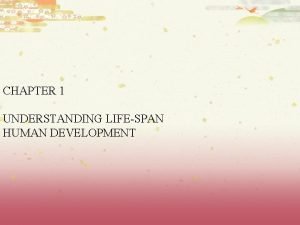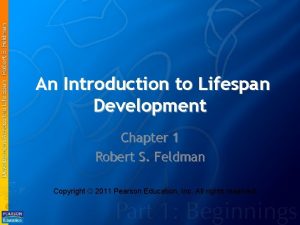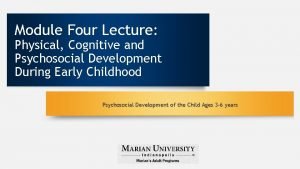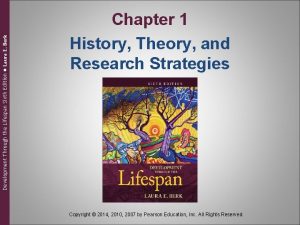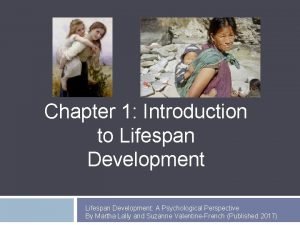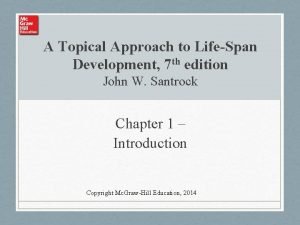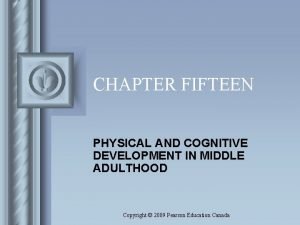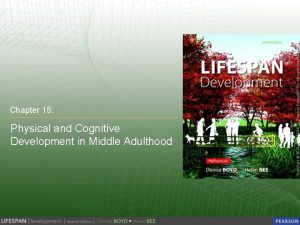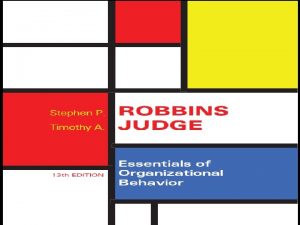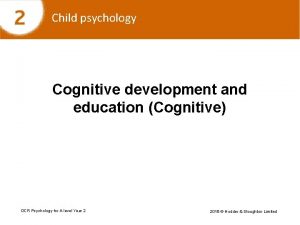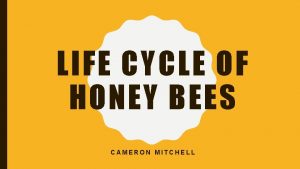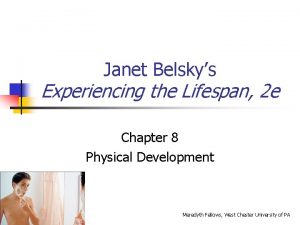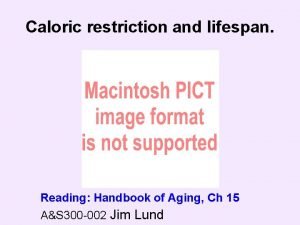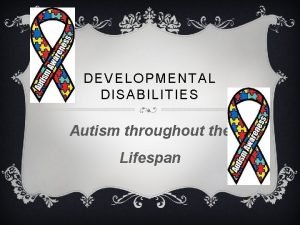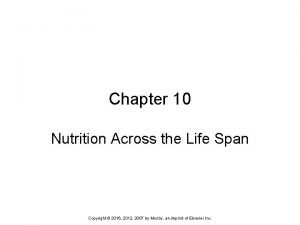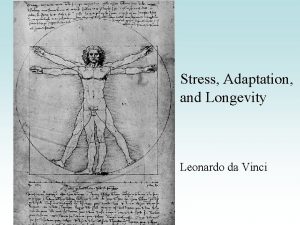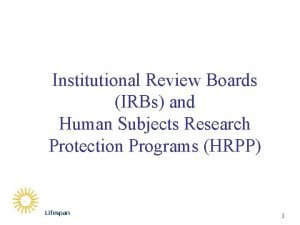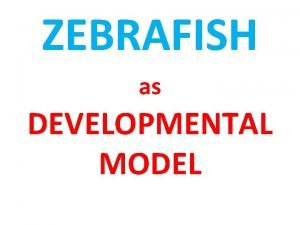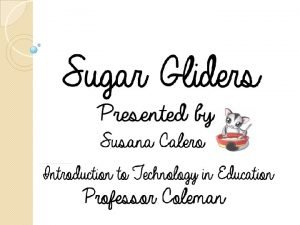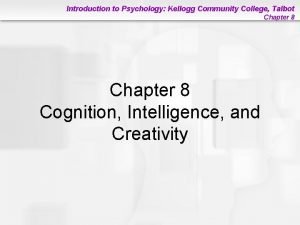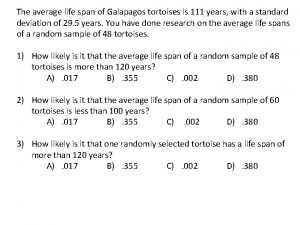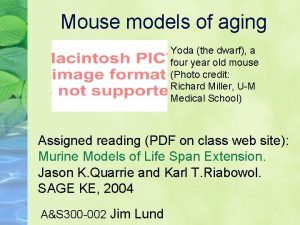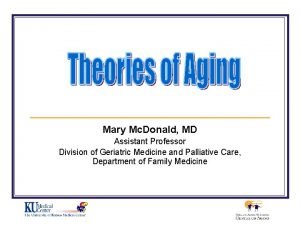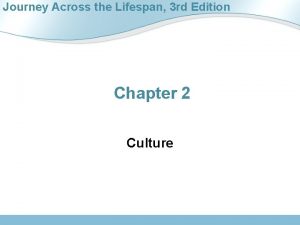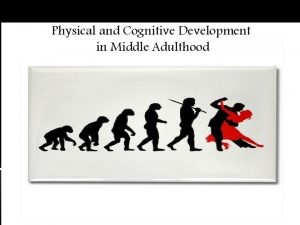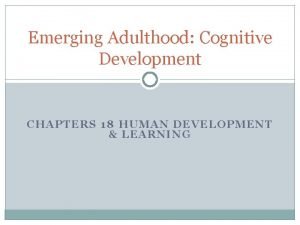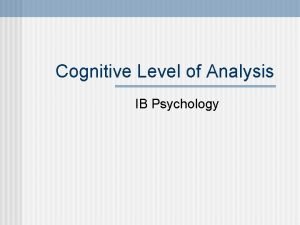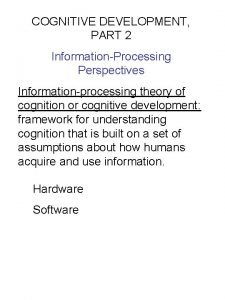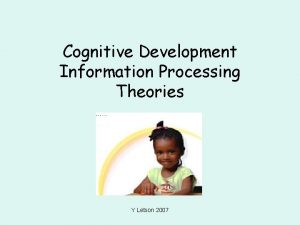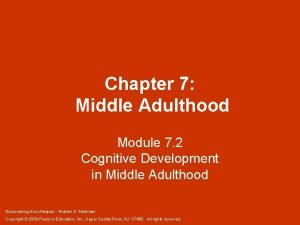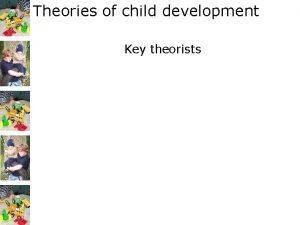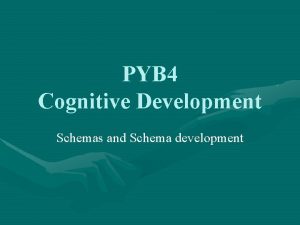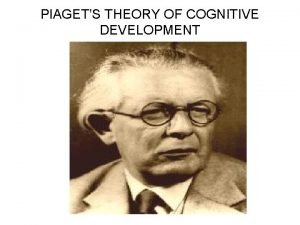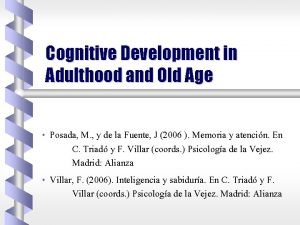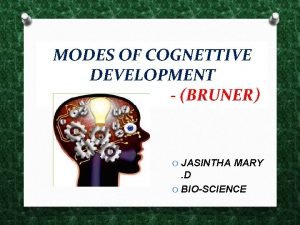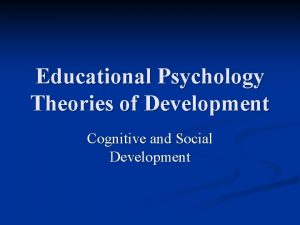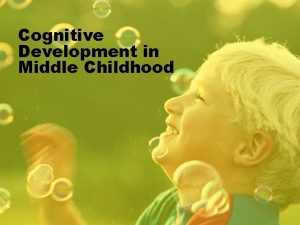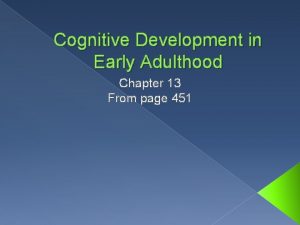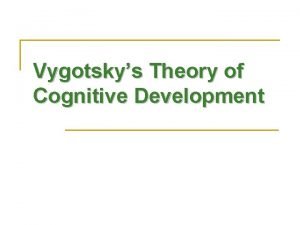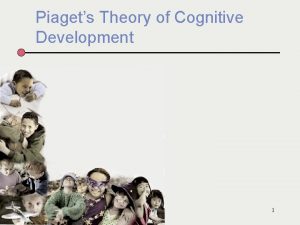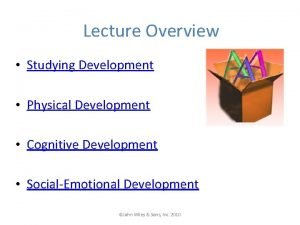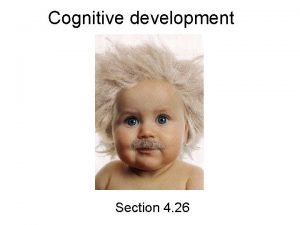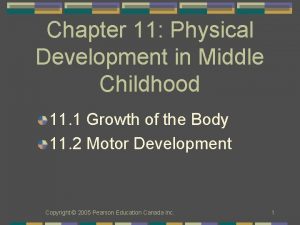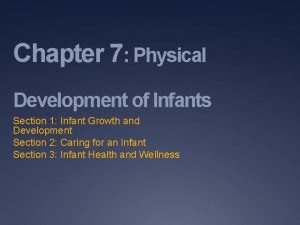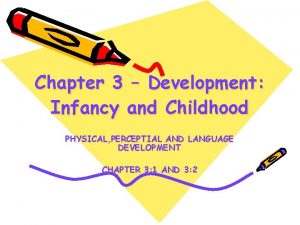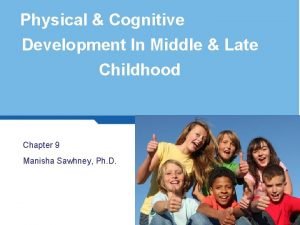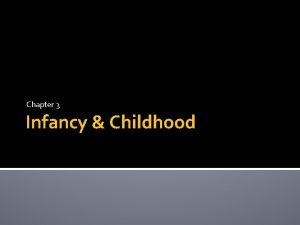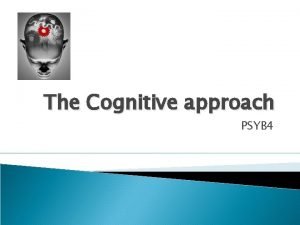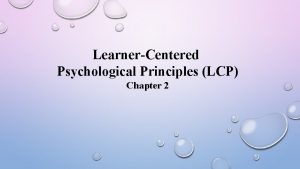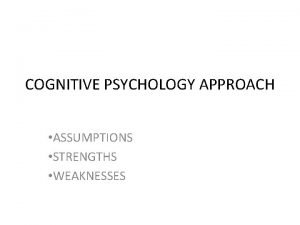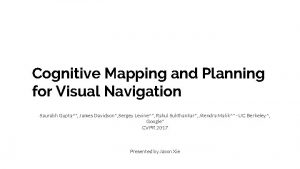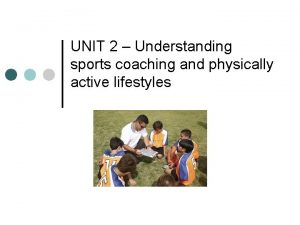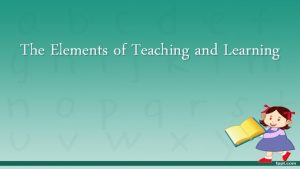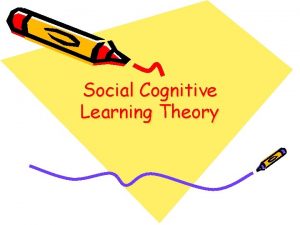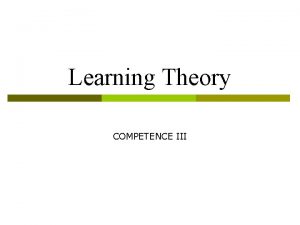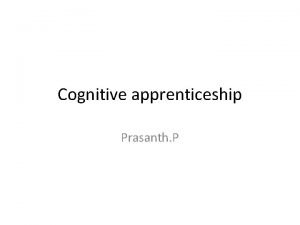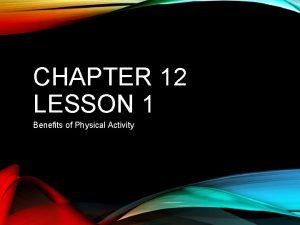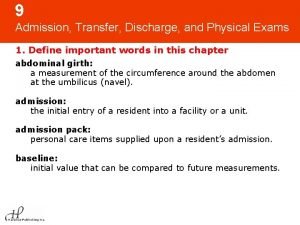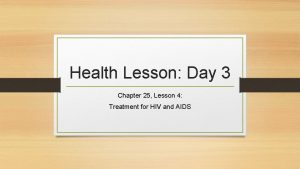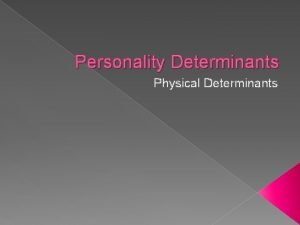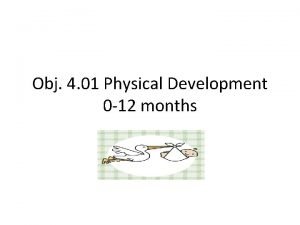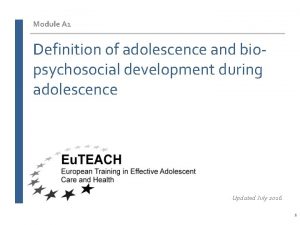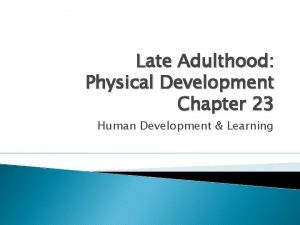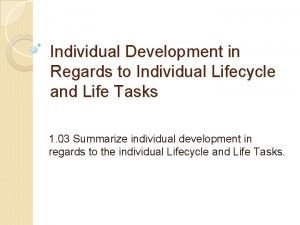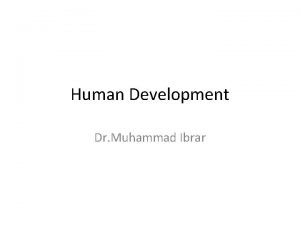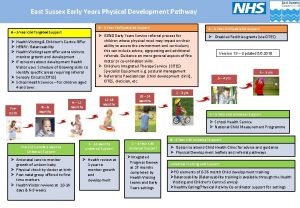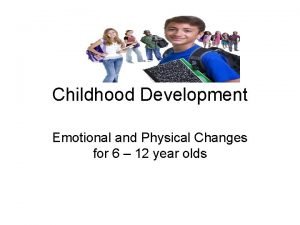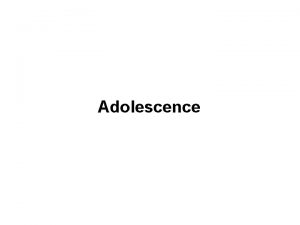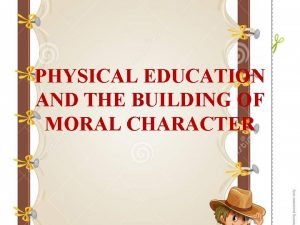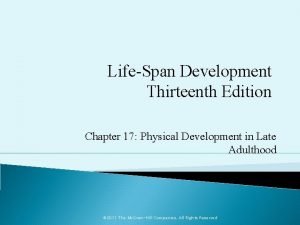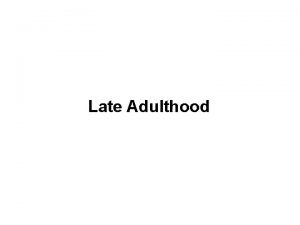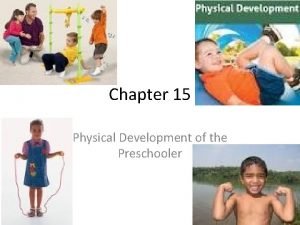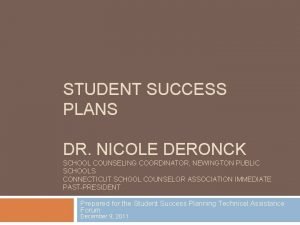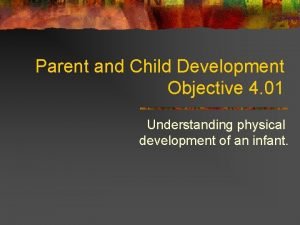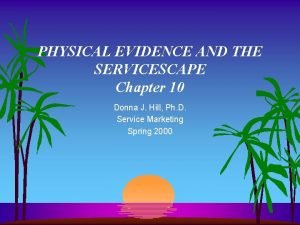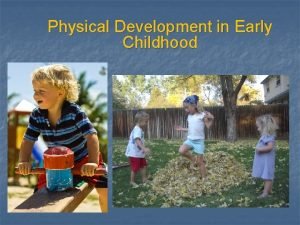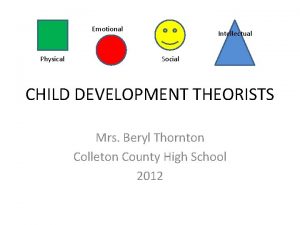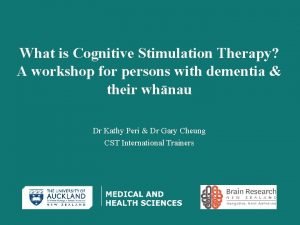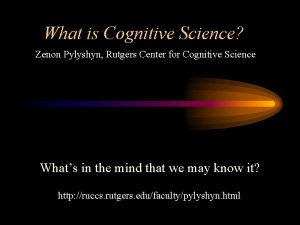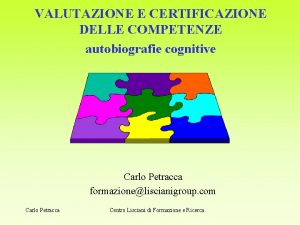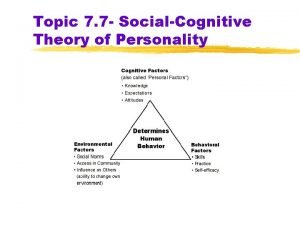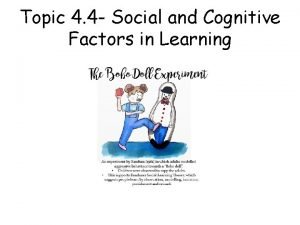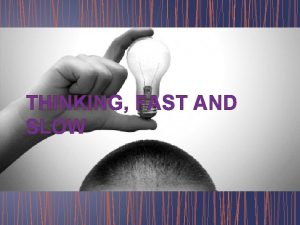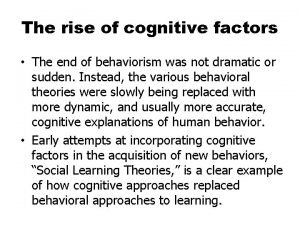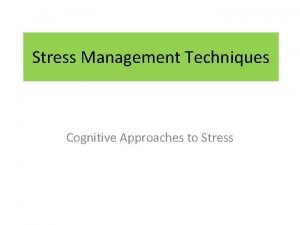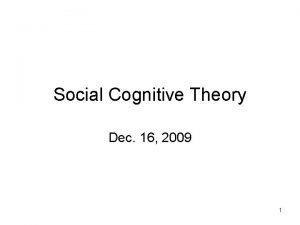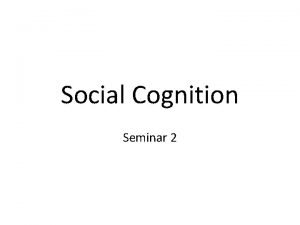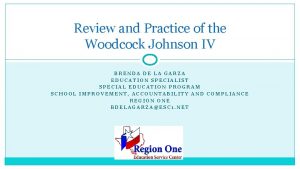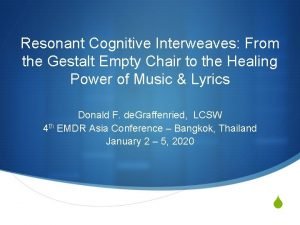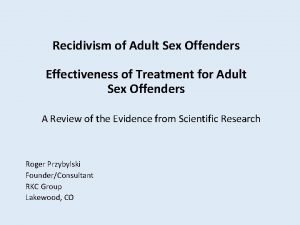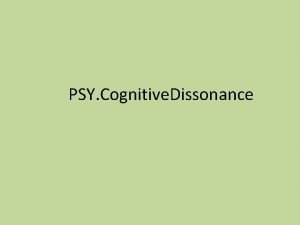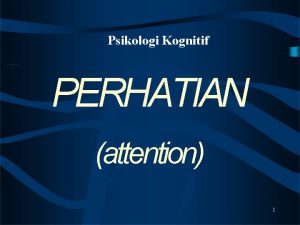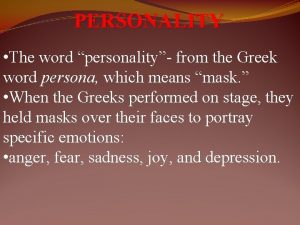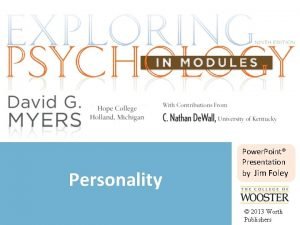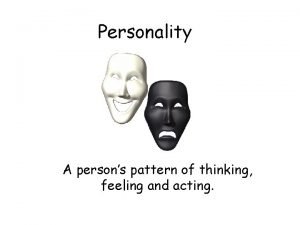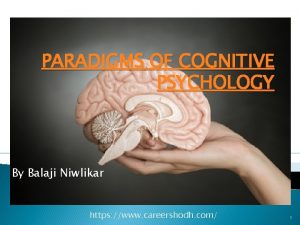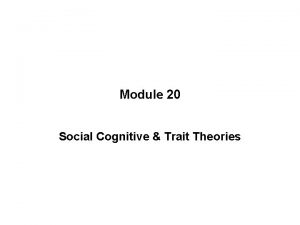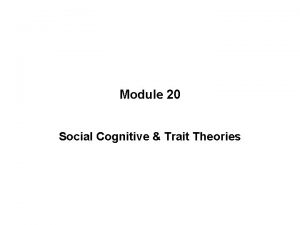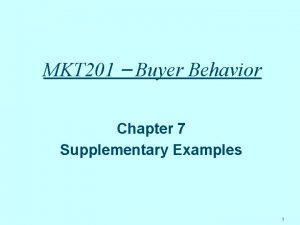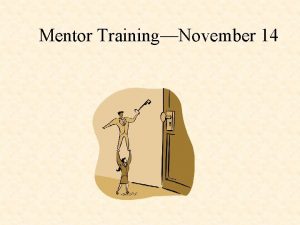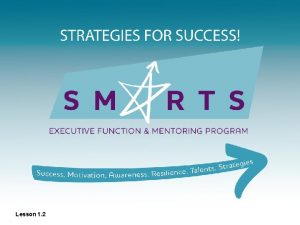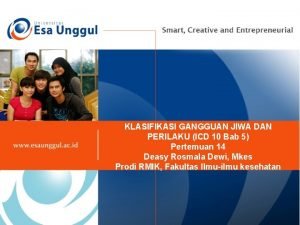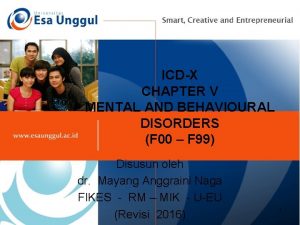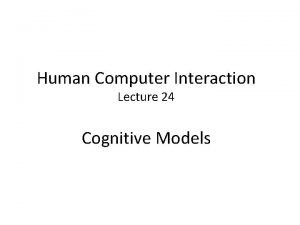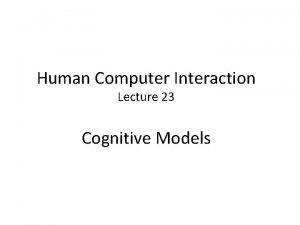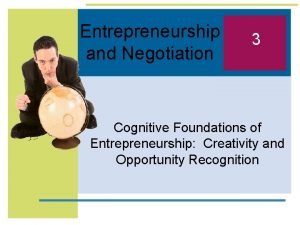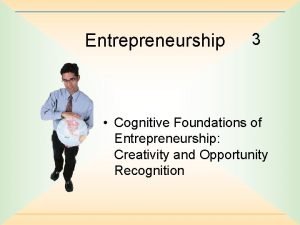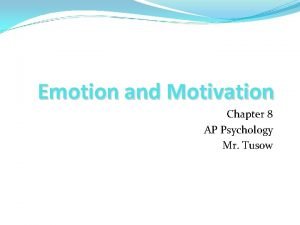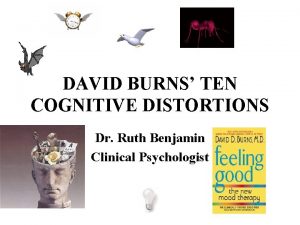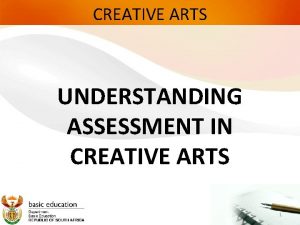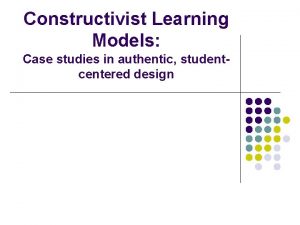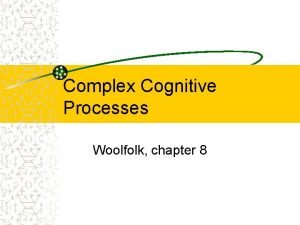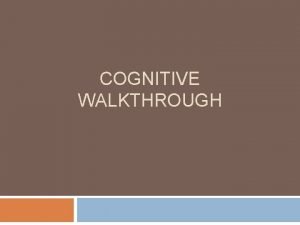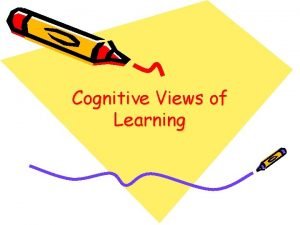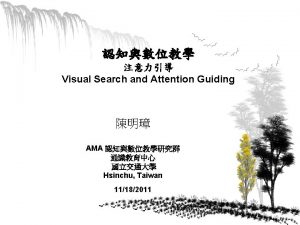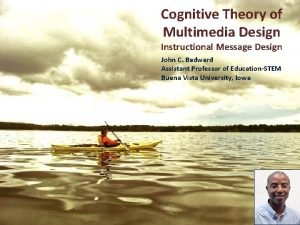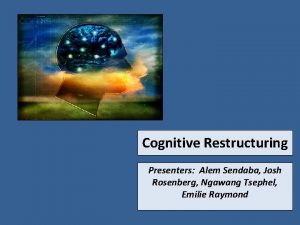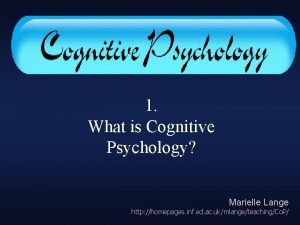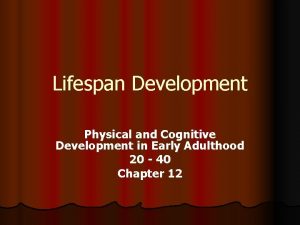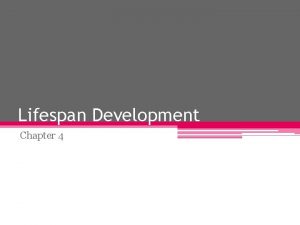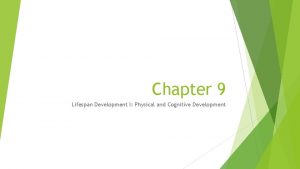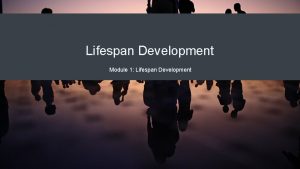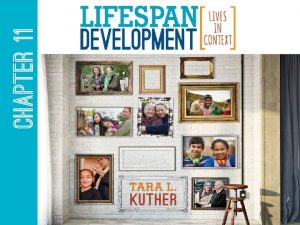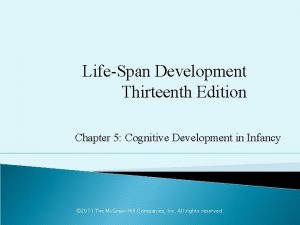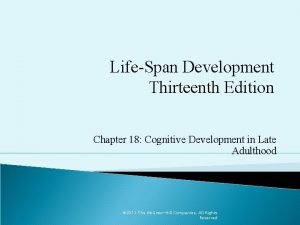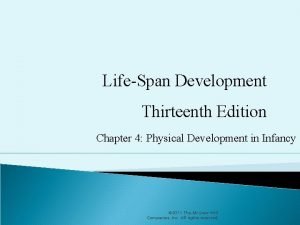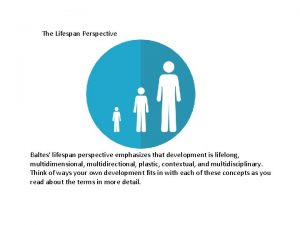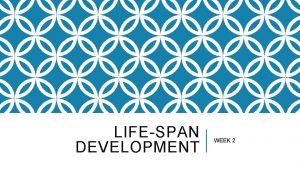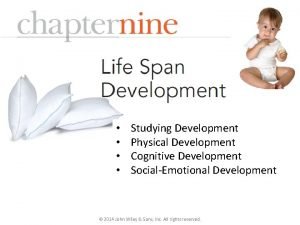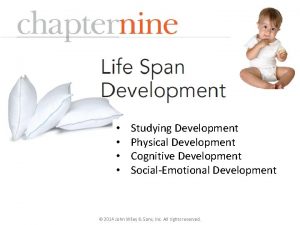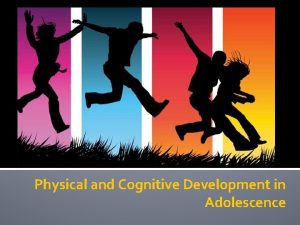CHAPTER 9 LIFESPAN DEVELOPMENT PHYSICAL AND COGNITIVE DEVELOPMENT








































































































































































![• 334 • Consummate love • (can think of love components [Sternberg, 1988] • 334 • Consummate love • (can think of love components [Sternberg, 1988]](https://slidetodoc.com/presentation_image/d0535cc695d882bf8eb1d7e243d11e2f/image-169.jpg)


















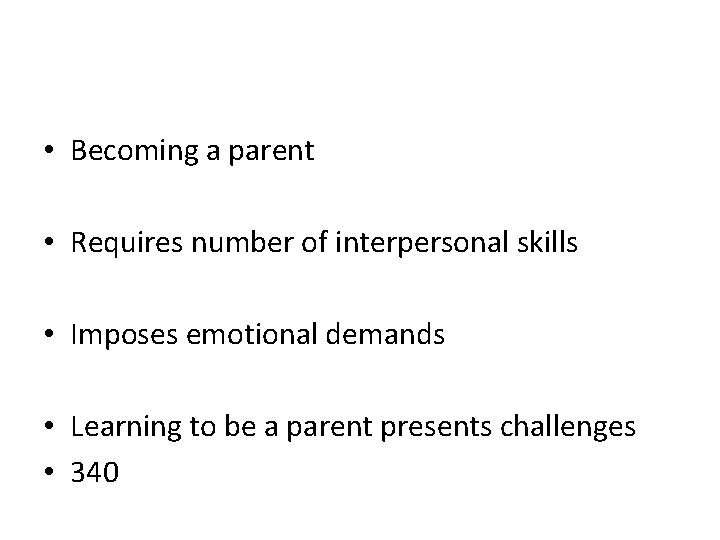
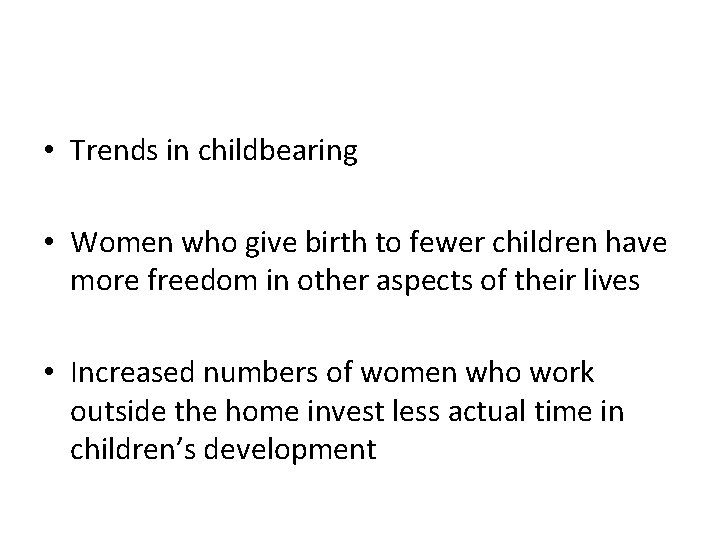
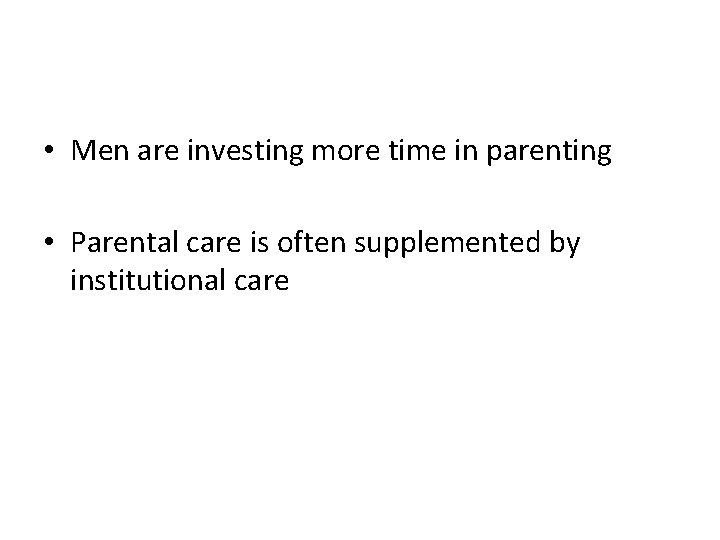
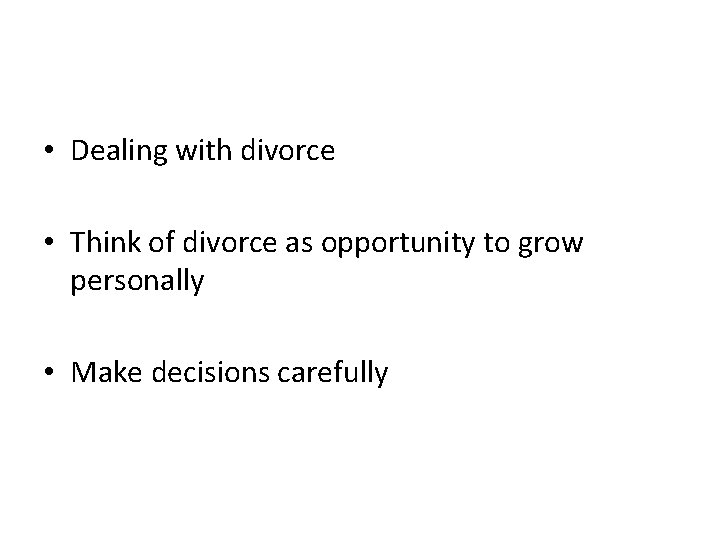


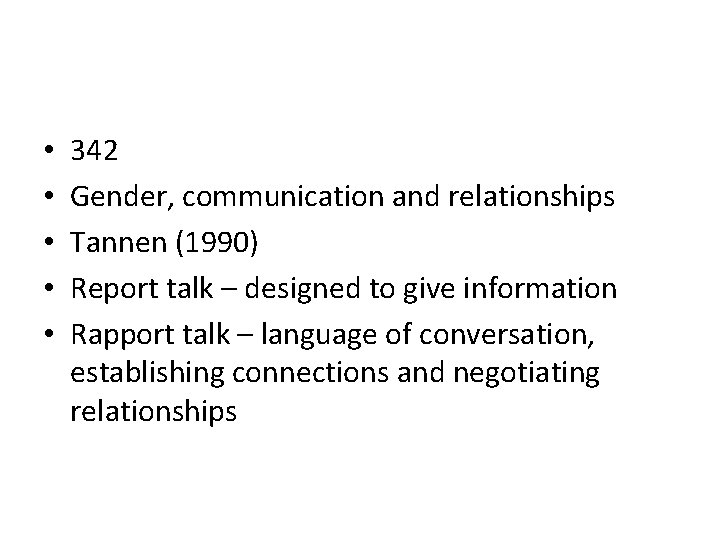
- Slides: 194

CHAPTER 9 LIFE-SPAN DEVELOPMENT PHYSICAL AND COGNITIVE DEVELOPMENT IN ADOLESCENCE

1. What is the nature of adolescence? • Dramatic biological changes • Relationships with parents, peers and teachers change • Thoughts become more abstract and idealistic • Most adolescents make transition to adult life successfully • Many do not because of too few opportunities and lack of support

2. What physical changes do we experience in adolescence? • • Puberty: period of rapid physical maturation Includes hormonal and bodily changes Usually early in adolescence Order of physical changes for males and females in puberty -- GEC opportunity

3. What hormonal changes occur in adolescence? • Hormones: chemicals secreted by endocrine glands • Carried throughout body using blood stream

4. Which endocrine glands are involved in adolescent changes? • Hypothalamus, pituitary and gonads • Hypothalamus = structure in the brain controlling eating and sexual behavior • Pituitary = brain structure controlling growth and regulating other glands • Gonads = testes in males and ovaries in females

5. Which hormones dominate in males and females during puberty? • Testosterone in males affects height and voice change • Estradiol (form of estrogen) in females affects changes in breasts, uterus and skeletal system • Both hormones are present in both boys and girls

6. What are other influences on changes in adolescent physical development? • Social factors contribute to changes • Stress, eating patterns, exercise, sexual activity tension and depression also affect hormonal levels

7. When does puberty begin? • For boys = as early as 10 and as late as 13 ½ • For girls = sometime between ages 9 and 15 • Specific time influenced by nutrition, health, and other environmental factors

8. What are influences on body image changes in adolescence? • Adolescents more likely preoccupied with bodies than other age groups • Girls tend to be less satisfied than boys, in general

9. How does brain develop during adolescence? • Corpus callosum thickens - improving ability to process information • Amygdala ( influences emotions, especially anger) matures earlier than prefrontal cortex • Adolescents capable of strong emotions • Prefrontal cortex not developed enough to control emotional expressions

10. How does sexual identity develop during adolescence? • Involves learning to manage sexual feelings, developing new forms of intimacy, learning skills to regulate sexual behavior • Sexual identity involves activities, interests and behavior styles • Sexual orientation develops during this time also

• Wide variety in tendency toward sexual activity • May be influenced by religious and other values

• Development of gay and lesbian preferences may be characterized by same-sex attractions in childhood, lack of heterosexual dating, and recognition of sexual orientation in mid- to late adolescence • Other adolescents may experience both samesex and other-sex attractions

11. What are sexually transmitted infections? • Diseases associated with sexual activity • Not prevented by use of contraceptives, such as birth control pills or implants • Examples: HIV-AIDS, gonorrhea, syphilis, chlamydia ( - further discussion in chapter 11)

12. Why is adolescent pregnancy a concern? • In US - highest rate of adolescent pregnancy and childbearing among industrialized countries • Rate of pregnancy and childbearing in US decreased since 1991, because of increased contraceptive use and fear of STIs, such as AIDS

• Adolescent pregnancy associated with risk for mother and baby • Often mother drops out of school • Usually mother never catches up economically with women who postpone childbearing • Risk for rapid subsequent pregnancies • Infants have higher risk of low birth weight and neurological problems

• Pregnancy alone not associated with negative consequences • Adolescent mothers likely from low-SES families • Adolescent pregnancy in general is high-risk circumstance • Support for adolescent mothers is important in assisting educational and occupational opportunities

13. What are issues important in adolescent health? • Nutrition and exercise affect quality of health • Poor nutrition and low-level exercise major contributors to obesity in adolescence • Problems with nutrition and health can lead to poor health habits and early death in adult life

• Sleep patterns also contribute to general health in adolescence • Inadequate sleep associated with fatigue, sleepiness, irritability, depression and increased use of beverages containing caffeine • Increased sleepiness during the day in older adolescents associated with changing biological rhythms

14. What are major causes of death in adolescence? • Accidents ( Risky driving habits (speeding and tailgating, driving under influence of alcohol or drugs) • Homicide (especially among African-American male adolescents) • Suicide ( discussed further in chapter 10)

15. How do parents, peers and school environment affect substance use and abuse in adolescence? • Special concern for children who begin use in early adolescence or childhood • Person who begins drinking before age 14 more likely to become alcohol dependent than peers who wait • Positive relationships with parents and others associated with lower probability to have substance use problems

16. What are 2 eating disorders affecting adolescent development? • Anorexia nervosa = obsession with being thin associated with starvation • Symptoms = (1) weighing less than 85% of normal weight for height and bone size; • (2) intense fear of gaining weight; • (3) having distorted body image

• Anorexia nervosa usually begins in early to middle adolescence • Most people affected are young, white individuals in adolescence or early adulthood • Usually from middle-class, well-educated families • Set high standards, feel stress about not meeting standards and obsessed about how others perceive them

• Bulimia nervosa = individual consistently follows a binge-and-purge pattern • Consumes large amounts of high-calorie food followed by purging through vomiting or use of laxatives • Preoccupied with food, strong fear of being overweight, experience depression and anxiety

17. How does Piaget’s theory describe cognitive development during adolescence? • Piaget believed the formal operational stage of cognitive development begins during adolescence • Formal operational stage associated with ability to think more abstractly • No longer limited to actual experiences to anchor thinking • Increased ability to develop make-believe situations, abstract propositions and hypothetical situations

• Example in verbal problem-solving ability • Formal operational thinker can think through the process involving A, B, and C and understand that if A=B and B=C, then A=C without actually seeing concrete examples of A, B, and C

• Another example is ability to think about thinking ( metacognition and considering the nature of thought) • Adolescents also display idealism and concern with possibilities • Speculate about ideal characteristics and qualities • Can lead to comparison with others in light of these ideal qualities

• Adolescent formal operational thinkers begin to use hypothetical-deductive reasoning • Creating a hypothesis and deducing implications and possible consequences • Also develop ways to test hypotheses

18. What criticisms have been applied to Piaget’s ideas? • GEC possibility

19. What is adolescent egocentrism? • Heightened self-consciousness • 2 key components: • (1) imaginary audience = belief that others are as interested in them as they themselves are • Associated with attempts to gain attention by others • and

• (2) personal fable = associated with sense of uniqueness and invincibility or invulnerability • Can lead to risky behaviors and believing that nothing bad will happen as a result

20. How does information processing theory describe cognition during adolescence? • Most important change in adolescent thinking is improved executive functioning • Involves reasoning, decision-making, monitoring critical thinking, and monitoring thinking progress • Improved executive functioning leads to more effective learning, improved use of attention and critical thinking

21. How does decision making change during adolescence? • Increased time in decision-making – concerning friends, dating, possibility of sex, plans for the future • Adolescents, more so than children, can generate different options, evaluate them, anticipate the consequences and consider source credibility • Ability to make good decisions not always associated with actually carrying them out in a specific life situation ( example, driving)

22. How does critical thinking change during adolescence? • Increases with age • Not as frequent as might be expected in late adolescence • If fundamental skills ( literacy and math) are undeveloped, critical thinking skills also likely to be immature • Improved critical thinking allows 4 benefits

23. Benefits of improved critical thinking • (1) increased speed and automaticity • (2)increased breadth of content knowledge in variety of domains • (3) increased ability to construct new knowledge combinations • (4)greater range and more spontaneity of using strategies for obtaining and applying knowledge

24. What are characteristics of how schools influence adolescent development? • First year of transition can be difficult • Transition occurs at same time adolescents are experiencing physical, emotional and social changes • Adolescents may experience the top-dog phenomenon • Moving from being biggest, oldest and most experienced to being youngest, smallest and least powerful

25. What recommendations have been made to create effective educational environments for young adolescents? • GEC possibility

26. What are concerns about the high school experience affects adolescent development? • Criticism that high schools encourage passivity • Recommendation that schools create variety of paths to develop secure identity • Concern that many students graduate with deficient reading, writing and math skills • Increased concern about high school drop outs

27. What is service learning? • Form of education promoting social responsibility and service to community • Encourages activities such as tutoring, helping older adults and assisting at child care centers • Can lead to decrease in being self-centered and more motivated to help others

28. What are 2 conditions that make service learning more effective? • (1) giving students a degree of choice as to the service learning activity they participate in • (2) providing students with opportunities to reflect on their service learning experiences • Have resulted in higher grades, increased goalsetting and higher self-esteem and improved sense of making a difference in the lives of others

CHAPTER 10 Socioemotional Development in Adolescence

1. What is identity? • • • Self-portrait Career and work path Political identity Religious identity Relationships Achievement and intellectual identity

• • • Sexual identity Cultural and ethnic identity Hobbies and interest Personality Physical identity

2. Erikson’s view • 5 th developmental stage • Psychological moratorium • -- gap between childhood security and adult autonomy • Free to try out new identities • Experimentation to find place in the world

3. Developmental changes • • • Continuous during adolescence Begins with attachment Sense of self Emergence of independence Final phase with life review in old age

• Late adolescence - physical, cognitive and socioemotional development allows synthesizing and constructing adult maturity • 4 stages of identity-

• Diffusion – not yet experience crisis or make commitment • Foreclosure – make a commitment but not experience crisis; especially with authoritarian parenting style

• Moratorium – experiencing crisis with no commitment • Achievement – past crisis and has made an identity commitment

4. Beyond Erikson • Key changes in identity may occur in early adult life – 18 -25 years • MAMA cycle possible during adult life – moratorium and achievement alternation

5. Family influences • Individuality has 2 dimensions • - self-assertion, when you have and communicate a point of view • - separateness, using communication to express difference from others

• Connectedness also has 2 dimensions • - mutuality, or sensitivity to and respect for others • - permeability, openness to others’ views

• Identity formation supported by family relationship characterized by • Individuation, encouraging adolescent to develop an independent point of view • Connectedness, providing secure base for exploring

• Strong connection and weak individuation results in identity foreclosure • Weak connection leads to identity confusion

6. Ethnic identity • Includes sense of membership in an ethnic group • Also attitudes and feelings associated with ethnic membership

• If member of ethnic minority, can choose among 2+ sources of identity • May develop bicultural or multicultural identity

7. Autonomy and attachment • Parents may have difficulty coping with adolescent’s search for autonomy and responsibility • Adolescent ability to gain control of behavior develops best if adult support is appropriate • Wise adults gradually allow adolescent to make mature decisions on their own

8. Role of attachment • Securely attached adolescents less likely to engage in problem behaviors such as illegal drug use and delinquency • Also more likely to have positive peer relationships • Caution: moderate correlations

9. Parent-Adolescent conflict • Most conflict experienced in everyday situations • Conflict may increase in early adolescence, stabilize in mid-adolescence and decrease in late adolescence • Every day conflict can serve positive developmental function • Transition to increasing independence

• Old model- • Suggest adolescents detach from parents as they mature • High stress and intense conflict

• New model- • Parents are important attachment source and support system • Moderate conflict

10. Competent adolescent have parents who: • Show warmth and respect • Demonstrate sustained interest • Understand adapt to cognitive and socioemotional changes • Communicate expectations for high standards • Recognize moderate conflict is normal

• Demonstrate constructive ways to resolve problems • Understand the developmental journey

11. Peers • Friendships- • In adolescence, fewer friendships and more intense and intimate • More important • Failure to develop intimacy can lead to loneliness and depression with reduced sense of self-esteem

• Young adolescents more influenced my peer pressure • Cliques – small groups, usually same sex and same age, may develop from club or sport activities • Crowds – larger and less personal, membership based on reputation – Defined by activities and level of self-esteem

12. Developmental changes in dating • Usually 10 th to 12 th grade before relationships last more than 2+ months • Early adolescents usually gather in groups for social acitivites • Cyberdating can begin in middle school – Hazardous – Declines in high school when real-life relationships more important

13. Gay and lesbian dating • May go out with same-sex peers to clarify sexual identity or disguise it • Relatively rare in adolescence because of few opportunities and social disapproval

14. Cross-cultural comparisons • Variations in adolescent behavior – 2/3 Asian Indian adolescents accept parent choice of marital partner – Philippines, many female adolescents migrate to city to work and support families – Middle East, adolescents do not interact with peers, even in school

• Street youth in Kenya and other countries, if abandoned by parents engage in delinquency or prostitution to survive

15. Health • Improved in some areas and not in others • Few adolescents die from infectious diseases and malnutrition • Increased health-risky behaviors such as drug use and unprotected sex

16. Gender • In many countries outside US, males have greater access to educational opportunities • Females usually have less freedom to pursue variety of careers and engage in leisure activities • Especially in Southeast Asia, Latin America and Arab countries – more restrictions on sexual activities of adolescent females

17. Families • In some countries outside US, close-knit families and extensive extended family networks • In US, parenting usually less authoritarian – More adolescents grow up in divorced families or step-families

18. Peers • Cultural differences in peer influences – South American street youth peers can serve as substitute family for survival

19. Ethnicity • Immigration- high rates contribute to growing cultural minorities in US • Characterized by stressors uncommon for native residents – Language barriers – Dislocations and separation from support networks – Change in SES status

– Dual struggle to maintain identity and acculturate

• Assimilation – absorption of ethnic minority groups into dominant culture – May mean loss of behaviors and values from ethnic minority group

• Pluralism – – Coexistence of distinct cultural and ethnic groups in same society

20. Ethnicity and socioeconomic status • May interact in ways that exaggerate influence of ethnicity • Ethnic minorities overrepresented in lower SES groups • Poverty adds to stress of ethnic minority adolescents

• Double disadvantage : 1) prejudice, discrimination and bias because of ethnic minority status • 2) stressful effects of poverty

21. Juvenile delinquency • Breaking the law or engaging in illegal behavior • Broad concept: littering to murder • More likely male than female • More frequently property offense than personal offenses • Delinquent rates higher for minority and lower SES groups than for others

• Causes - • Many proposed – - heredity – Identity problems – Community and family influences --characteristics of lower SES culture may promote delinquency – Norms of lower SES peer groups may be antisocial and counter to goals and norms of larger society

• Adolescents in communities with high crime rates – Characterized by poverty, unemployment, and feelings of alienation from general society – Lack quality schooling, educational funding and organized activitiesd

22. Depression More likely in adolescents than children Higher in girls than in boys Females more likely to ruminate about moods Female self-image more likely negative compared to that of boys • Females encounter more discrimination • •

• • • Family factors – depression more likely if parents are depressed, emotionally unavailable, experiencing marital conflict, having financial problems

• Peer relationship influences • Depression more likely if peer relationships are unsatisfactory • If no best friend • Having troubles with friends • Experiencing peer rejection

• • Suicide more likely if – Long history of family problems Family instability and unhappiness Lack affection and emotional support

• Suicide – cont. • Experience high control and pressure for high achievement • Physical or sexual abuse • Lack supportive friendship network • Recent or current stressful experiences

Life-span exam 3 notes • Chapter 11 • Physical and cognitive development in early adulthood

1. Transition from adolescence to adulthood • Emerging adulthood (18 -25 years) • Identity exploration, especially in love and work • Instability (residential changes)

• Self-focused – autonomy in running own lives • Feeling in-between • Age of possibilities – opportunity to transform lives

2. Markers of becoming an adult • In US, having more or less permanent full-time job • Economic independence • Wide variability in individual independent between ages of 17 -27 (309)

• Taking responsibility for one’s own actions • In other countries – marriage is an important marker

3. Transition from high school to college (309) • Involves stress and change • Recurrence of top-dog experience? • May involve moving to more impersonal school structure

• More geographically and culturally diverse • Increased focus on achievement and assessment

• Positive features of college life: • Feel more adult • More time to spend with peers

• More time to explore different lifestyles and values • More independence from parental monitoring

• Many colleges have counseling centers to help cope with stress • Provide information on coping and academic matters • (310)

4. Physical development (310) • Often reach peak physical development between 19 -26 • Same for athletes as well as non-athletes • Begin physical decline at this time

• Muscle tone and strength begin to decrease around age 30

• Sensory abilities show little change • Lens of eye loses some elasticity • Hearing peaks in adolescence and seems stable during early adulthood • Increase of fatty tissue begins

5. Health (311) • Emerging adults have > 2 x mortality rate of adolescents • True of males more so than females • Have fewer chronic health problems

• Most bad health habits begun in adolescence continue into early adulthood • Inactivity, diet, obesity, substance use, reproductive health care, health-care access get worse

• If develop poor health habits – • Not eat breakfast • Not eat regular meals

• Rely on snacks as main food source • Eat excessively to point of being obese • Smoking and/or drinking moderately or heavily • Getting by on few hours of sleep

• Poor health habits contribute to level of life satisfaction • Health habits can be improved: – Eating healthy kinds and amounts of food – Appropriate exercise – Avoid abusing drugs

6. Eating and weight • (312) • Obesity is serious and pervasive issue • Defined as having BMI of 30+ • Linked to hypertension, diabetes and cardiovascular disease

• Dieting: • Practiced by many • Low rate of continuing success

• Most effective programs involve exercise • Places individual at risk for other problems – Yo-yo weight loss and gain – Liquid diets and low-calories diets linked to gall bladder damage

7. Regular exercise • (313) • Exercise helps to prevent disease – Heart disease and diabetes – Recommend 30 minutes of aerobic exercise per day – Aerobic = sustained, stimulating heart and lung activity

• Exercise also • Improves self-concept • Reduces anxiety and depression

8. Substance abuse • Alcohol use • Binge drinking increases during college years • Chronic binge drinking more characteristic of males

• Consequences of binge drinking: missing classes, physical injuries, problems with police, unprotected sex • Binge drinking peaks at ages 21 -22

• (314) • Alcoholism - • Disorder involving long-term, repeated uncontrolled compulsive and excessive alcohol use

• Impairs health and social relationships • High frequency of first-degree relatives who abuse alcohol

• Cigarette smoking and nicotine - • Dangers of smoking or being around smokers • Linked to death as a result of cancer, heart disease, chronic pulmonary problems

• Secondhand smoke linked to lung cancer • Addiction to nicotine makes quitting difficult

• Nicotine is stimulant • Increases energy and alertness • Stimulates neurotransmitters that have calming or pain-reducing effect • Quitting smoking reduces risk of cancer death

9. Sexuality • Sexual activity (315) • By age 18 more than 60% have experienced sexual intercourse • By age 25, most have experienced sexual intercourse • Age 18 -25 is time most likely sexually active and unmarried

• Patterns of heterosexuality - • 1)males more likely to have casual sex and females more selective • 2)casual sex more likely between 18 -25 than other times of life

• Sexual orientation and behavior - (316) • Heterosexual attitudes and behavior: • 3 categories: 1/3 have sex 2 x/week+, 1/3 have sex few times/month, 1/3 few times/yr or not at all

• Married and cohabiting couples have sex more frequently than noncohabiting couples

10. From 1994 survey • Most Americans do not report kinky sex activities • Adultery is more the exception than the rule • Men think about sex more so than females

• Sources of sexual orientation - • Until late 1800’s, most believed people were either heterosexual or homosexual • More recently, sexual orientation is viewed as a continuum: male-female, same-sex or bisexual

• Most people, regardless of orientation, experience similar physiological arousal during sexual activity • Most people report no differences in attitudes, behaviors and adjustments regarding sexual activity

• Link between same-sex orientation and being exposed to high levels of hormones • characteristic of female fetuses between 2 -5 months of prenatal development

• Possible reason why same-sex orientation s difficult to modify • same-sex orientation likely determined by • combination of environmental, physiological, hereditary and cognitive factors

• Attitudes and behavior of lesbians and gay males - • Gender differences characteristic of heterosexual relationships also appear in same-sex and GLB relationships • Lesbians and gay males develop bicultural identity

• (317) • May adapt best if don’t define themselves in either-or terms

• Sexually-transmitted infections - • Diseases contracted primarily through sexual activity • Including intercourse, oral-anal and oral genital contact

• Most common: • bacterial infections (gonorrhea, syphilis, Chlamydia) and • those caused by viruses (AIDS, genital herpes, and genital warts)

• Most serious STI: infection caused by HIV which destroys body’s immune system • (319)

• Best strategies for protecting against HIV and AIDS: • Knowing your and your partner’s risk status • Having regular physical exams

• Having protected sex • Avoiding sex with multiple partners

11. Forcible sexual behavior and sexual harrassment • Rape - • Forcible and nonconsensual sexual intercourse • Definitions vary from state to state • Victims may be reluctant to experience consequences of reporting rape

• Women more likely victims of rape • Traumatic for victims and those close to them

• Consequences of rape - • Depression and anxiety • Increased substance use and/or abuse • Sexual dysfunction (reduced desire and inability to experience orgasm)

• Date or acquaintance rape is increasing concern • Coercive sexual activity with someone known to the victims

• Sexual harassment - • Power display of one person over another

• Many forms: • inappropriate sexual remarks and physical contact, • blatant propositions and • physical assault

• Women more likely victims than men • Serious psychological consequences

12. Cognitive development • (321) • Piaget’s view - • Concluded adults and adolescents think qualitatively basically the same

• At 11 -15 years we enter formal operational stage • Young adults more quantitatively advanced compared to adolescents

• Piaget and information processing theorists believe - • adults increase amount of knowledge in specific areas

13. Realistic and pragmatic thinking • Realistic – idealism of adolescents decreases as young adults face realities of postadolescent life • Switch from acquiring knowledge to applying knowledge as pursue success in employment

14. Reflective and relativistic thinking • Adolescents often view world in either-or terms and polarities • Young adults often move away from absolutist thinking • Reflective thinking also becomes possible

• Developmental changes - • Young children often have • idealistic fantasies of what life will be like as adults (superheroes, sports or entertainment stars)

• High school age adolescents – • think about careers, • less idealistic as realize the requirements for certain occupations

• Late adolescents and young adults • become aware of training and educational requirements in terms of college majors

• By early to mid-20’s, many are settling into full -time employment • Begin to establish themselves in their chosen career fields

• (324) • Monitoring occupational outlook - • Important to be knowledgeable about a variety of career fields and employers

• Good source is Occupational Outlook Handbook • OOH describes employment possibilities for various career fields as well as • training/education requirements and job duties and responsibilities

15. Impact of work and employment • Work defines an important part of a person’s identity • Influences financial standing, housing, where and how we spend our time, friendships and health • Creates structure and rhythm to life, often not conscious of until missed • Creates stress

• (324) • 4 characteristics of work settings linked to stress and health problems – High job demands – Inadequate opportunities to participate in decision making – High level of supervisor control – Lack of clarity about criteria for competent performance

• • • (325) Work during college - Many college students work full or part-time Can help pay for or offset college expenses Can restrict student opportunities to learn Increased work hours linked to increased risk of dropping out of school

• Employment can contribute positively to education • Cooperative or co-op programs involve paid apprenticeships for students

• Internships or summer employment can support education, especially in your field of study • Can lead to employment after graduation

• (325) • Dual career couples - • May have special problems balancing work and other life responsibilities • If both partners work, sharing household tasks can be an issue • Having children as well can cause complications

• (236) • For dual career couples, division of home responsibilities is changing: • US men take increased responsibility for maintaining the home

• US women taking increased responsibility for working outside the home • US men showing greater interest in family life and parenting

• Diversity in the workplace - • In developed countries, women increasingly working outside the home • Ethnic diversity increasing in the workplace

• Women and ethnic minority members experience problems breaking through glass ceiling (invisible barrier to career advancement and being hired in managerial positions

ARE THERE ANY QUESTIONS? • REQUIRED EXAM AND SGQ CONTENT FROM CHAPTERS 9, 10, 11 • BRING YOUR REFERENCE CARD TO THE EXAM

LIFESPAN DEVELOPMENT • CHAPTER 12 • SOCIOEMOTIONAL DEVELOPMENT IN EARLY ADULTHOOD • SOURCE OF BONUS ITEM CONTENT

Intimacy • 331 • Self-disclosure and sharing private thoughts important for intimacy • 332 • Erikson’s stage of intimacy versus isolation • Inability to establish meaningful relationships can interfere with healthy personality development

• Important to develop balance between intimacy and isolation • Challenge of developing independence from parents • Task of making own decisions without relaying excessively on other people • 332

• • • Friendship in adult life serves several functions Companionship Intimacy Support Source of self-esteem

• Friends can be better source of support in times of stress compared to family members • We choose our friends • Adult friends tend to come from same age group • 333

• Romantic love • Also called passionate love • Strong components of sexuality and infatuation • Complex combination of passion, fear, anger, sexual desire, joy and jealousy

• Affectionate love • Also called companionate love • Occurs when desire to have another person close by • Deep caring affection for the other person
![334 Consummate love can think of love components Sternberg 1988 • 334 • Consummate love • (can think of love components [Sternberg, 1988]](https://slidetodoc.com/presentation_image/d0535cc695d882bf8eb1d7e243d11e2f/image-169.jpg)
• 334 • Consummate love • (can think of love components [Sternberg, 1988] as intimacy, commitment and passion) • Involves optimal levels of all three components • Infatuation = high in passion, low in commitment

• Affectionate love = high in intimacy and commitment; lower in passion

• • • Single adults 335 Enjoy lifestyles Can be stereotyped Swinging single versus being desperately lonely

• Singles share some issues • Common problems: forming intimate relationships, confronting loneliness, finding place in a couples-oriented society

• Advantages of being single • Time to make decisions about life, time to develop personal resources, freedom to make decisions on your own, opportunities to explore possibilities and new places

• 335 • Cohabiting adults • Living together in sexual relationship without being married • Percentage increased between 1970 and 2005 • May view cohabiting as on-going lifestyle • Avoid official aspects of marriage

Cohabiting relationships tend to be short-lived Offers problems as well as advantages Increased risk of domestic violence Higher level of disapproval from parents and friends • Difficulty with owning property jointly • •

• Married adults • Stable marriage viewed as most desired endpoint of adult relationship development until about 1930 • More recently, personal fulfillment more often a goal compared to marriage stability

• Benefits of a good marriage • Live longer, healthier lives • Potential for lower level of biological and cardiovascular risk factors

• Divorced adults • Number of divorced adults increased between 1950 and 2002

• • • Risk factors for divorce: Youthful marriage Low educational level Lack of religious affiliation Having parents who are divorce Having a baby before marriage

• 337 • Divorce more likely early in marriage

• Remarried adults • Divorced adults usually remarry within 4 years of divorce • Men remarry sooner than women • Stepfamilies occur in many forms • 338

• Strategies for coping with stress of living in a stepfamily • Have realistic expectations • Develop new positive relationships within the family

• Gay male and lesbian adults • Gay and lesbian relationships tend to be similar to heterosexual relationships in satisfactions, joys, loves and conflicts • Increasing number of gml couples create families that include children

• 338 - misconceptions about gml relationships • Stereotype of having one masculine and one feminine partner true in small percentage of relationships • Having large number of multiple partners is rare

• 338 • Majority of gml individuals prefer long-term, committed relationships

339 Gottman, 1994; Principles for making marriage work Establish love maps – personal insights and detailed maps of partner’s life and world • Nurture fondness and admiration – • •

• Turn toward your partner rather than away, seeing your partner as a friend • Allow your partner to influence you • Create shared meaning, being honest and sensitive with your partner

• Becoming a parent • Requires number of interpersonal skills • Imposes emotional demands • Learning to be a parent presents challenges • 340

• Trends in childbearing • Women who give birth to fewer children have more freedom in other aspects of their lives • Increased numbers of women who work outside the home invest less actual time in children’s development

• Men are investing more time in parenting • Parental care is often supplemented by institutional care

• Dealing with divorce • Think of divorce as opportunity to grow personally • Make decisions carefully

• Focus more on future than on the past • 342 • Use strengths and resources to cope with problems

• Don’t expect to be happy and successful in everything you do

• • • 342 Gender, communication and relationships Tannen (1990) Report talk – designed to give information Rapport talk – language of conversation, establishing connections and negotiating relationships
 Chapter 9 lifespan development
Chapter 9 lifespan development Physical development
Physical development Exploring lifespan development chapter 1
Exploring lifespan development chapter 1 Exploring lifespan development chapter 1
Exploring lifespan development chapter 1 Cognitive development in early adulthood
Cognitive development in early adulthood Physical changes during early adulthood
Physical changes during early adulthood Define physical cognitive and psychosocial development
Define physical cognitive and psychosocial development Ul guidance counselling
Ul guidance counselling Cognitive and non cognitive religious language
Cognitive and non cognitive religious language Development through the lifespan 6th edition
Development through the lifespan 6th edition Lifespan development a psychological perspective
Lifespan development a psychological perspective A topical approach to lifespan development
A topical approach to lifespan development Lifespan development third edition
Lifespan development third edition Lifespan development third edition
Lifespan development third edition Chapter 5 cognitive development in infancy and toddlerhood
Chapter 5 cognitive development in infancy and toddlerhood A vygotskian classroom promotes ________.
A vygotskian classroom promotes ________. Denny's model of physical and cognitive ageing
Denny's model of physical and cognitive ageing Denny's model of physical and cognitive ageing
Denny's model of physical and cognitive ageing The investment of an employee's physical cognitive
The investment of an employee's physical cognitive Late childhood
Late childhood Module 47 infancy and childhood cognitive development
Module 47 infancy and childhood cognitive development Cognitive development and education
Cognitive development and education Module 47 infancy and childhood cognitive development
Module 47 infancy and childhood cognitive development A life cycle of a snow leopard
A life cycle of a snow leopard Gulper eel facts
Gulper eel facts Petit four sec
Petit four sec Splendour beetle
Splendour beetle Honeybee lifecycle
Honeybee lifecycle Ponce de leon nationality
Ponce de leon nationality Janet belsky
Janet belsky Henry hudson
Henry hudson Lifespan of every animal
Lifespan of every animal The developing person through the lifespan
The developing person through the lifespan Prairie dog lifespan
Prairie dog lifespan Autism lifespan
Autism lifespan Nutrition across the lifespan
Nutrition across the lifespan Life span eagle
Life span eagle Da vinci lifespan
Da vinci lifespan Lifespan irb
Lifespan irb Henry hudson fun facts
Henry hudson fun facts Portuguese man of war habitat
Portuguese man of war habitat Lifespan of platelets
Lifespan of platelets Nudibranch lifespan
Nudibranch lifespan Zebrafish lifespan
Zebrafish lifespan Are sugar gliders legal in maine
Are sugar gliders legal in maine Concept of formation
Concept of formation Galapagos turtle lifespan
Galapagos turtle lifespan Yoda lifespan
Yoda lifespan Mary wollstonecraft lifespan
Mary wollstonecraft lifespan Journey across the lifespan
Journey across the lifespan Lifespan corn snake
Lifespan corn snake Cognitive development in middle adulthood
Cognitive development in middle adulthood Late adulthood intellectual development
Late adulthood intellectual development Jerome bruner cognitive theory
Jerome bruner cognitive theory Information processing theory
Information processing theory Postformal thought
Postformal thought Cognitive levels of development
Cognitive levels of development Characteristics of cognitive development
Characteristics of cognitive development Information processing theory of cognitive development
Information processing theory of cognitive development Information processing theory of cognitive development
Information processing theory of cognitive development Cognitive development middle adulthood
Cognitive development middle adulthood What is gesell's theory of development
What is gesell's theory of development Cognitive development schema
Cognitive development schema Conclusion of piaget's theory
Conclusion of piaget's theory Psicometric chart
Psicometric chart Conclusion of cognitive development
Conclusion of cognitive development Cognitive theory child development
Cognitive theory child development Piaget theory of cognitive development
Piaget theory of cognitive development Bruner's theory of cognitive development
Bruner's theory of cognitive development Scaffolding piaget
Scaffolding piaget Information processing theory of dreams
Information processing theory of dreams Language development in middle childhood
Language development in middle childhood Early adulthood cognitive development
Early adulthood cognitive development Features of cognitive development
Features of cognitive development Psychsim 5 cognitive development
Psychsim 5 cognitive development Piaget's stages of cognitive development
Piaget's stages of cognitive development Vygotsky guided participation
Vygotsky guided participation Lev vygotsky theory
Lev vygotsky theory Three prenatal stages
Three prenatal stages Piaget's theory of cognitive development
Piaget's theory of cognitive development Cognitive development
Cognitive development Theory of mind
Theory of mind Chapter 10 physical development from one to three
Chapter 10 physical development from one to three Physical development in middle childhood chapter 11
Physical development in middle childhood chapter 11 Chapter 7 physical development of infants
Chapter 7 physical development of infants Rate fences services marketing
Rate fences services marketing What is physical fitness test in mapeh
What is physical fitness test in mapeh Physical perceptual and language development
Physical perceptual and language development Internally programmed growth of a child
Internally programmed growth of a child Compare india and sri lanka on the basis of hdi
Compare india and sri lanka on the basis of hdi Growth and development in physical education
Growth and development in physical education Middle and late childhood
Middle and late childhood Physical perceptual and language development
Physical perceptual and language development Module 46 infancy and childhood physical development
Module 46 infancy and childhood physical development Cognitive approach definition
Cognitive approach definition Principles of motivational and affective factors
Principles of motivational and affective factors Strengths of the cognitive approach
Strengths of the cognitive approach Cognitive mapping and planning for visual navigation
Cognitive mapping and planning for visual navigation Cognitive associative and autonomous stages of learning
Cognitive associative and autonomous stages of learning Appetitive faculties of a learner
Appetitive faculties of a learner Structural linguistic and behavioral psychology
Structural linguistic and behavioral psychology Cognitive walkthrough and heuristic evaluation
Cognitive walkthrough and heuristic evaluation Social and cognitive factors in learning
Social and cognitive factors in learning Behaviorism vs constructivism
Behaviorism vs constructivism Cognitive apprenticeship collins brown and newman
Cognitive apprenticeship collins brown and newman Big data 101 answers
Big data 101 answers Russia and the eurasian republics physical map
Russia and the eurasian republics physical map Chapter 12 physical activity and fitness
Chapter 12 physical activity and fitness Unit of quantity
Unit of quantity Chapter 9 admission transfer discharge and physical exams
Chapter 9 admission transfer discharge and physical exams Chapter 12 • lesson 1 benefits of physical activity
Chapter 12 • lesson 1 benefits of physical activity Admission transfer discharge and physical exams
Admission transfer discharge and physical exams Chapter 25 lesson 4 physical and mental challenges
Chapter 25 lesson 4 physical and mental challenges Diversity and human needs and development
Diversity and human needs and development Physical development 11-13 years
Physical development 11-13 years Physical development adalah
Physical development adalah Physical defects in personality development
Physical defects in personality development Physical development
Physical development Middle adolescence physical development
Middle adolescence physical development Middle adulthood physical changes
Middle adulthood physical changes Late adulthood physical development
Late adulthood physical development 9-year-old physical development
9-year-old physical development Physical development
Physical development Physical development in early childhood
Physical development in early childhood Psychosocial development in early adulthood
Psychosocial development in early adulthood 9-year-old physical development
9-year-old physical development Physical development in middle childhood
Physical development in middle childhood Calamba priest who was esteemed and respected by rizal
Calamba priest who was esteemed and respected by rizal Physical development in adolescence
Physical development in adolescence Moral development in physical education
Moral development in physical education Physical changes in late adulthood
Physical changes in late adulthood Fraction definition
Fraction definition Module 15 preschoolers physical development
Module 15 preschoolers physical development Bvt naviance
Bvt naviance School physical development plan
School physical development plan Physical education during the age of feudalism
Physical education during the age of feudalism Physical development objective
Physical development objective Physical layout of nursing unit
Physical layout of nursing unit Physical development in middle childhood
Physical development in middle childhood Physical development theorists arnold gesell
Physical development theorists arnold gesell Cognitive stimulation therapy training
Cognitive stimulation therapy training Rutgers cognitive science
Rutgers cognitive science Autobiografie cognitive esempi
Autobiografie cognitive esempi Cognitive walkthrough vs heuristic evaluation
Cognitive walkthrough vs heuristic evaluation Social cognitive approaches to personality
Social cognitive approaches to personality Cognitive factors
Cognitive factors Cognitive reflection test
Cognitive reflection test Cognitive approach vs behavioral approach
Cognitive approach vs behavioral approach Cognitive factors
Cognitive factors Hierarchy of effects model
Hierarchy of effects model Rational vs logical
Rational vs logical Scaffolding teaching method
Scaffolding teaching method Social cognitive theory motivation
Social cognitive theory motivation Cognitive psychology concepts
Cognitive psychology concepts Woodcock johnson test of oral language
Woodcock johnson test of oral language Cognitive interweave
Cognitive interweave Cognitive behavioral therapy for sex offenders
Cognitive behavioral therapy for sex offenders Trait theory
Trait theory How to reduce cognitive dissonance
How to reduce cognitive dissonance Cognitive filter
Cognitive filter Module 58 trait theories
Module 58 trait theories Social cognitive approaches to personality
Social cognitive approaches to personality Social cognitive approaches to personality
Social cognitive approaches to personality Barnum effect
Barnum effect 4 paradigms of cognitive psychology
4 paradigms of cognitive psychology Bandura social cognitive theory of personality
Bandura social cognitive theory of personality Trait theory vs social cognitive theory
Trait theory vs social cognitive theory Cognitive dissonance theory example
Cognitive dissonance theory example Cognitive coaching planning map
Cognitive coaching planning map Definition of cognitive flexibility
Definition of cognitive flexibility Cognitive style
Cognitive style Hierarki adalah
Hierarki adalah Kode icd 10 gangguan bicara
Kode icd 10 gangguan bicara Watson cognitive solutions
Watson cognitive solutions Klm examples hci
Klm examples hci Cognitive complexity theory hci
Cognitive complexity theory hci History of cognitive psychology
History of cognitive psychology Cognitive foundations of entrepreneurship
Cognitive foundations of entrepreneurship Cognitive foundations of entrepreneurship
Cognitive foundations of entrepreneurship Over justification affect
Over justification affect Cognitive root of prejudice example
Cognitive root of prejudice example Beck cognitive theory
Beck cognitive theory Ruth benjamin
Ruth benjamin Cognitive walkthrough vs heuristic evaluation
Cognitive walkthrough vs heuristic evaluation Uiecu hours
Uiecu hours Assessment meaning in education
Assessment meaning in education Cognitive apprenticeship in the classroom
Cognitive apprenticeship in the classroom Complex cognitive processes definition
Complex cognitive processes definition Answer
Answer Cognitive perspective
Cognitive perspective Imaginal disputation
Imaginal disputation Cognitive theory of multimedia learning
Cognitive theory of multimedia learning Cognitive theory of multimedia learning
Cognitive theory of multimedia learning Cognitive restructuring
Cognitive restructuring 5 major domains of psychology
5 major domains of psychology


